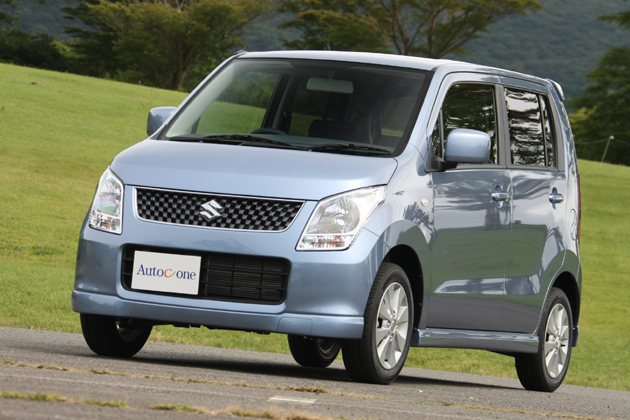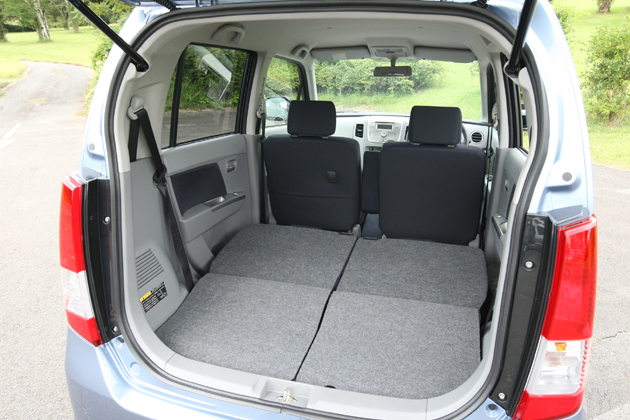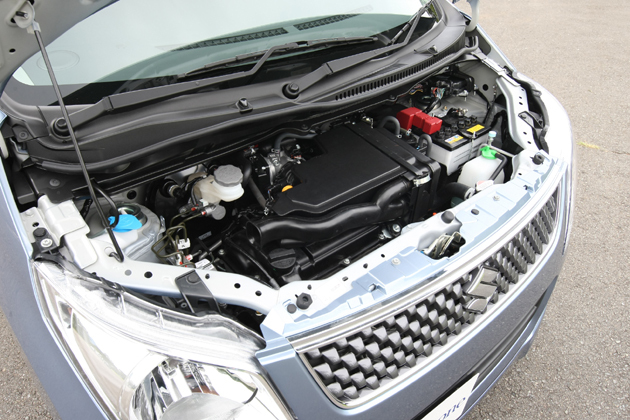Suzuki Wagon R & Wagon R Stingray Description
ReportDecember 21, 2021
Brand New Debut" of the 4th Generation
It has been 15 years since the debut of the Suzuki Wagon R in 1993. At the time of its debut, the Wagon R was loved by many people for its unique tall-boy size package and design that gave it a strong presence never seen before in a mini car.
The recent deterioration of the automobile market caused by environmental issues and soaring gasoline prices has not abated, and the situation continues to be severe. However, it is precisely under such circumstances that small and compact cars are attracting more attention, providing a tailwind to revitalize this market.
The auto industry has seen this as an opportunity and has been working hard to introduce new minicars. Suzuki, always keeping the word "evolution" in mind, has finally launched the fourth generation of the Wagon R, which has maintained its position as the No. 1 selling minicar.


Wagon R design with natural taste


The new packaging of the Wagon R is formed by the body size of 3,395 mm (length) x 1,475 mm (width) x 1,675 mm (height) with a completely redesigned platform.
It is equipped with a newly developed front suspension and a modified rear suspension that further contributes to the driving performance and quietness. The exterior design of the Wagon R, which is based on such a platform, retains some of the Wagon R characteristics of its predecessor, but the new model has a sharp and stylish form that is more in tune with the sensibilities of young people. The forward-slanting wedge roof and the rounded back door give the impression of a "Wagon R".
The lines from the hood to the roof and the beltline that runs along the shoulders and gives a sense of momentum are sharp and reinforce the impression of a stylish compact car. In the interior, the wheelbase has been extended by 40mm over the third generation to 2,400mm, which has resulted in a 140mm increase in interior length, resulting in a space of 1,975mm.
The distance between the front and rear seats has been increased by 140mm to 985mm, and the gap between the rear step and the rear floor has been set at a near-zero 5mm. In addition, the step between the rear step and the rear floor has been reduced to almost zero (5mm), thus eliminating the step in the center tunnel under the rear seats and creating a flat rear floor, creating a space that is unbelievably spacious for a minicar. Two interior colors were exclusively designed to match the character of the car. The instrument panel no longer features a column shift, but instead features a new shift design.
Cyber-cool Stingray design


The Stingray, on the other hand, has a very cyber-cool design. The Stingray has a very cyber-cool design with a mix of sporty and heavy looks, giving it a strong presence.
Looking around the exterior, we were struck by the strong personality of the thick front mask. The headlamps wrap around the sides of the car, and the skeleton chrome grille is arranged in a horizontal line to emphasize the roundness.
The rear combination lamps are made of high-grade aluminum vapor deposition. The TS grade features large 15-inch tires (563mm) and newly designed aluminum wheels. The Stingray's interior is unified by a fearless black interior with a strong contrast of silver decorations. The center panel is also black with a three-dimensional effect. The steering wheel is a leather-wrapped steering wheel with audio switches. This alone gives it a high quality feel.
The gauges are a trio of self-luminous gauges with three-dimensional scales and blue gradation proofing, and are truly glittering. In addition, the TS grade instrument panel, front door trim and speakers are newly illuminated in blue, reminiscent of lighting in a fashionable club.
The seats are sewn with special high-grade seat upholstery, and the appearance and comfort are perfect for this class.
Both NA and turbo engines are suitable for lively city driving


Two types of engines are available. The NA-VVT engine, which has been improved from the previous generation, is installed in the Wagon R and the newly developed turbo engine is installed in the Stingray.
The improved NA-VVT engine has improved cooling around the cylinder head, optimized air intake system layout, and increased low-speed torque for better handling in city driving.
In terms of fuel economy, the CVT-equipped model achieves 23.0km/L (10-15 mode fuel economy), and the 4AT-equipped (FA/FX) model achieves 22.0km/L (10-15 mode fuel economy).
On the other hand, the newly developed turbocharged engine achieves a high output of 47kw (64ps) by using a new turbocharger with high boost pressure, and in combination with the CVT, it is said to provide powerful acceleration and hill climbing performance. Despite this, the 2WD model achieves a fuel efficiency of 21.5km/L (10-15 mode fuel efficiency), making it a very wallet-friendly car.
Buy now!
TCV Corporation has the partnership with MOTA.
Copyrights ©2021 MOTA, All Rights Reserved.
Translated by TCV, MOTA liability, trademark, images and documents use rules apply for the original and the translation.
Reproduction and distribution of this article including images without written permission is prohibited.
This article was published in the past, and the grade status may differ from that of the exported / imported vehicle.
In case of Copyright infringement , a criminal investigation may be initiated to whether it's individual or a company.


